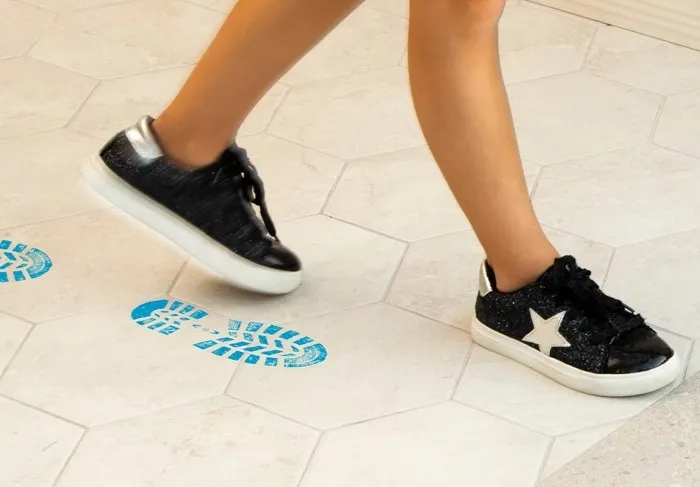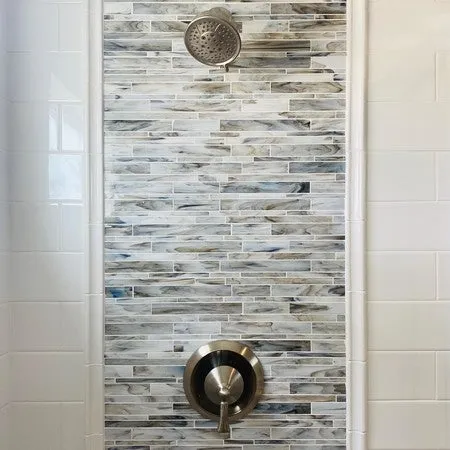Natural Stone in the Bay Area
Natural stone is a timeless and elegant choice for flooring and other hard surfaces, such as countertops, backsplashes, and shower walls. Renowned for its unique variations in color and pattern, each stone slab is a distinct work of art. Natural stone provides exceptional resilience, withstanding heavy foot traffic and enduring the test of time. Whether you like the timeless allure of marble, the sophisticated durability of granite, the rustic charm of slate, the warm beauty of travertine, or the modern elegance of limestone, each type of natural stone adds charm to kitchens, bathrooms, and various living spaces. Our selection of high-quality, durable, and versatile options ensures you find the perfect fit for any design.
About Natural Stone
Stone is an all-natural material used in construction for thousands of years. It’s a product that adds both beauty and sophistication to any room. There are three kinds of rock formations from which stone tile is eventually carved: sedimentary, igneous, and metamorphic rock.
The distinctions between each come from how they were formed.
- Igneous rock is the result of lava or magma cooling and hardening. Granite is an example of igneous rock.
- Sedimentary rock is formed when layers of biological deposits are compacted and crystallized over many years. Sandstone and limestone are examples of sedimentary rocks.
- Metamorphic rock is formed when other types of rock (igneous or sedimentary) are exposed to high levels of heat and pressure within the earth. Marble and travertine are examples of metamorphic stones.
To create natural stone tiles, rock is quarried from the earth, cut into slabs, and eventually into tiles. Manufactured stone tiles contain natural stone elements and are actually synthetic products. They consist of stone fragments or chips suspended in a bonding material. In general, manufactured stone tiles are more durable than natural stone. Stone tiles come from numerous different kinds of stone and are available in a host of colors, sizes, and finishes.
Large stone blocks are first removed from rock quarries to make natural stone tiles and then cut into slabs. These slabs are cut even further to create individual tiles. Natural stone tiles are not manufactured; they are made from materials quarried from the earth. Because there is natural variation between different types of stone, there is also variation in the characteristics and appearance of individual tiles, depending on the type of stone used and the pattern of rock from which it was cut. Each tile is unique.
Manufactured stone, or “agglomerate stone,” is a synthetic material. It’s created by mixing natural stone chips with a binding agent, such as cement, epoxy resins, or polyester. This mixture creates a tough, durable material.
Yes — when it comes to the finish on stone tiles, there are many options. Different finishes can give entirely different looks to the same piece of stone. Your local Floor Store can show you examples of various stone finishes, including polished, honed, split-faced, tumbled, and more.
Stone tile generally comes in standard sizes: 12x12, 13x13, 16x16, and 18x18.
Stone tiles come with two basic edge types. A bull-nosed edge has a curved or rounded edge that has been polished. A straight edge, also polished, is a 90-degree tile edge.
Natural stone is a versatile product and can be installed in most rooms inside and outside the home. Because different stones have different properties, some types are preferred in specific settings. For instance, the slate may be preferred for a patio or atrium, whereas the travertine may be preferred for a family or living room. If you aren’t sure what stone option would work best for you, contact your local Floor Store, and an associate or design professional can walk you through the pros and cons of different products.

Stone installation
What To Expect During Your Natural Stone Flooring Installation
There's a lot to think about when installing natural stone. It's good to understand what the process entails before you buy. At The Floor Store, we have years of experience and are happy to answer any of your specific installation questions. Stone installation is a labor-intensive process. We highly recommend leaving the work to seasoned professionals with the skill, know-how, and tools to install your stone tile correctly.
Before Your Installation
Your installation experts will want to look at the floor substrate, which is the surface on which they will be installing the tile. If your substrate is cement, they may be able to tile right over it. However, if you have a wood subfloor, they will likely need to lay down an additional layer to support and prevent moisture from coming through. Once complete, they can put down mortar and lay the tile.
During Your Installation
To ensure the tile is well-laid and the room is symmetrical, the installation team will measure the area and use a chalk line to set the pattern. Some tiles may need to be cut at this point. A thin mortar set will be applied, and then the tiles will be laid and pressed into place. Once the tiles have been set, the installers will apply grout between the tiles. Un-sanded grout is commonly used with stone, so there is less possibility of scratching the stone surface.
After Your Installation
After installation, if you are sensitive to dust and odors, good ventilation should be established for 48 to 72 hours to make sure that dust from the installation settles. From there, routine care and maintenance are up to you!
Stone care and maintenance
How can I keep my stone floor clean?
The beauty and life of your natural stone floors depends on how you care for it. Follow a proper cleaning routine to keep it looking great over time. A few easy steps can extend the life of your flooring solution.
Care & maintenance
The natural stone you have in your home, office, or commercial building is an investment that will give you many years of beautiful service. Simple care and maintenance will help preserve your stone’s beauty for generations to come.
Stone floors are relatively easy to clean and maintain. Dirt, grit and sand are abrasive materials and can do significant damage to stone tile. Cut down on dirt by placing mats or rugs near exterior entrances. Dust mop your floor regularly and clean them with warm water and a mild soap. Be sure to avoid acidic cleansers, like products containing vinegar or lemon juice, as well as abrasive cleaners like scouring powders or creams – both can cause damage to your stone.




